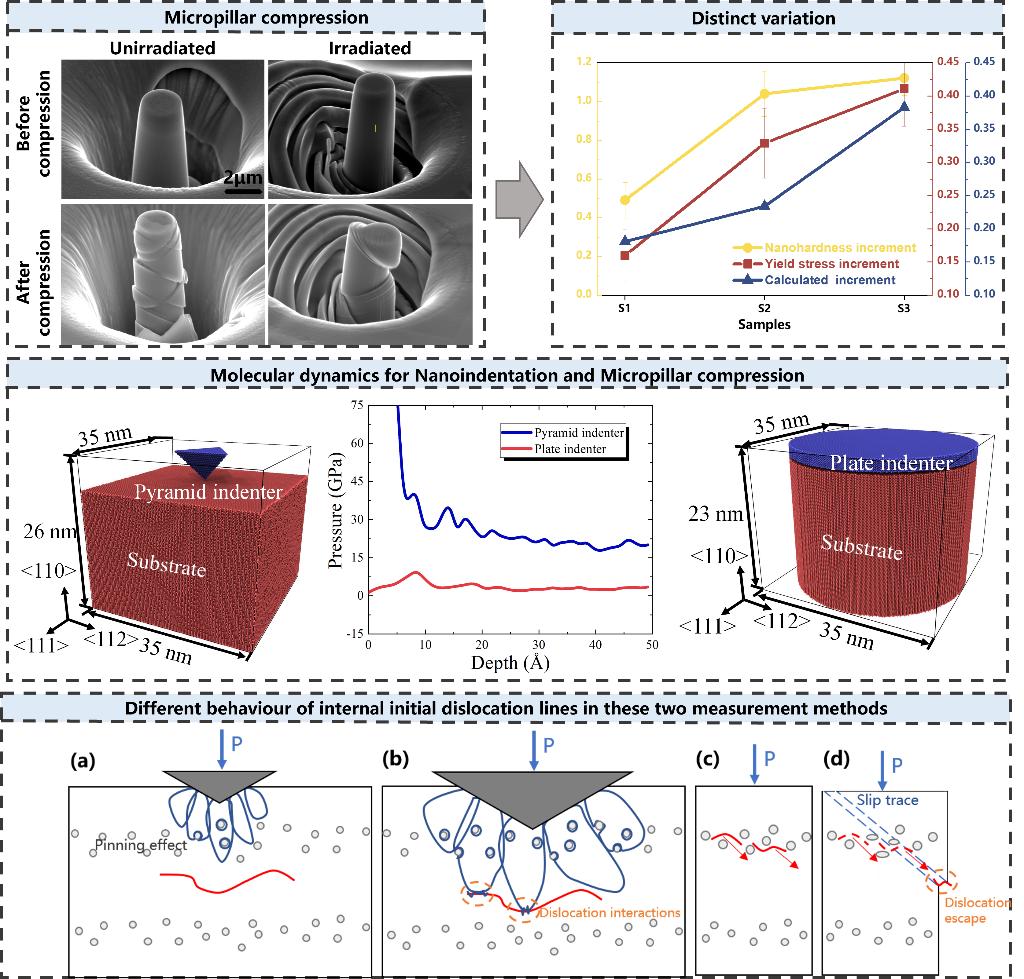






Recently, the alloy irradiation research group of Shanghai Institute of Applied Physics and Professor Huiqiu Deng from Hunan University have made significant progress in the mechanical measurement study of irradiated nickel-based alloys. The comparative analysis of micropillar compression and nanoindentation techniques is conducted on multi-energy He ion-irradiated Ni-based samples, and their distinct mechanisms are investigated in detail through experiments and MD simulations. The paper entitled “Micro/nano mechanical properties differences of shallow irradiation damage layer revealed by a combined experimental and MD study”, published in the Materials Science & Engineering A, a top journal in the filed of materials science. Dr. Zhenbo Zhu and Dr. Long Guo (Hunan University) are the co-first authors of the paper, and the corresponding author is Professor Hefei Huang.
To address the shallow damaged layers in ion-irradiated samples, nanoindentation and micropillar compression techniques have increasingly been employed to analyze variations in mechanical properties and their correlation with microstructural defects. Current research findings generally indicate that irradiation results in increased yield stress with increasing ion dose. However, the key factors for the relationship between outcomes obtained through these two measurement methods remains undetermined because of the limited availability of data to clarify their underlying mechanisms. To explore this relationship and its associated mechanisms, both micropillar compression and nanoindentation techniques were employed to assess the mechanical properties of Ni-based samples irradiated by He ions. These irradiation experiments utilized multi-energy He ions to minimize the impact of non-uniform damage layers. Interestingly, a distinctive behavior was observed: their nanohardness values were nearly identical, while the yield stress increment in the highest irradiation dose sample was significantly greater than that in the second highest dose sample during micropillar compression. TEM characterization of the microstructure evolution and calculations based on the DBH model indicated that irradiation defects are not responsible for the observed variation. Subsequently, a comparative analysis of these two methods was simulated, and their mechanisms were investigated using MD simulations. Several factors, including the activation of various slip systems, plastic area, and surface absorption, contribute to the differences observed in indentation and pillar compression tests. These factors lead to the distinct evolution of internal initial dislocation lines, which significantly contribute to additional hardening observed in nanoindentation tests.
This work was financially supported by the National Natural Science Foundation of China, the Youth Innovation Promotion Association, the Young Potential Program of Shanghai Institute of Applied Physics, Chinese Academy of Sciences.
Link: https://doi.org/10.1016/j.msea.2023.145874

Fig. 1. The distinct variation in mechanical property obtained through nanoindentation and micropillar compression techniques, complemented by MD results revealing the underlying mechanism.